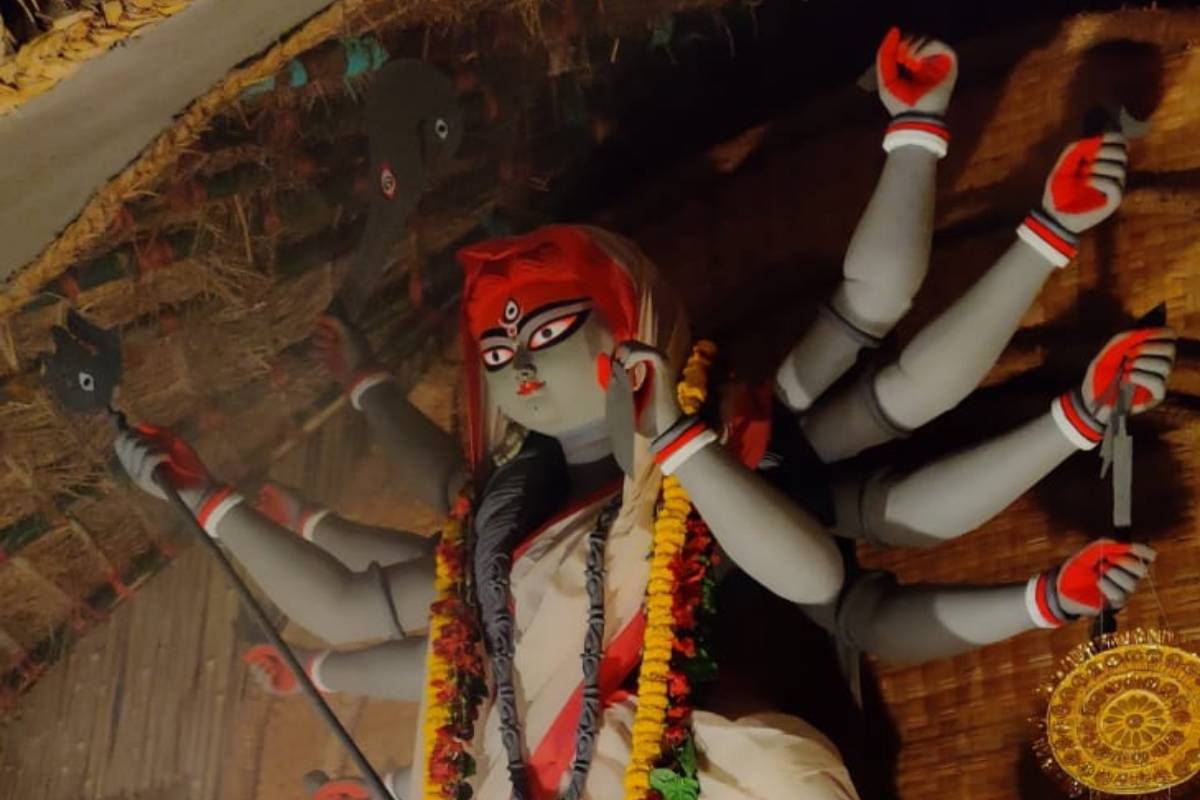Kolkata’s first-ever comic con set to thrill fans of comics, cosplay, and anime!
Kolkata gears up for the ultimate pop culture phenomenon featuring international comic legends, larger-than-life cosplay, and nonstop thrill.
One of the most prominent pujas is held annually by Kalyan Bandyopadhay, Trinamool leader and member of Parliament at his home and constituency, Serampore, in the suburbs of Kolkata

Durga Puja then and now, times change, fervour remains the same (Photo : Soubhab Naskar)
Politicians, during Durga Puja, belonging to different and rival parties, have one point of unity. They
try to transcend the boundaries of division and connect to the one deity who presides over the
particular day (or fortnight for that matter as in the case of Goddess Durga). Yet this ostensible unity
in divinity, is definitely not without its competitive edge and one witnesses the spillover of political
rivalry into the spiritual space, especially when it comes to politicians who perform their own pujas.
One of the most prominent pujas is held annually by Kalyan Bandyopadhay, Trinamool leader and
member of Parliament at his home and constituency, Serampore, in the suburbs of Kolkata. People
from the districts and villages throng to this particular pandal, which is usually known for its
grandeur and magnificence.
“I prefer the traditional display of the deity rather than experimenting too much with theme and
form just to fit into a modern milieu for the sake of it,” Bandyopadhay told The Statesman, which
was privy to the sheer splendor of this year’s puja, travelling to this historical town by the river, fifty
kilometers from the capital city, on his invitation. Serampore, which was the only locality colonized
by the Danish and known as Frederiksnagore from 1755 to 1845, is also the locus of Bengal’s first
college and university and played a crucial role in ushering in an era of education in the country.
Advertisement
As the Parliamentarian representing this region, Bandyopadhyay says that Serampore’s educational
and cultural heritage is unique. Pointing out that the Durga Pujas of this area are exceptional in
terms of retaining the original spirt of rituals and worships, he laments that there is a dearth of
awareness about it. “People tend to focus only on the pujas of Kolkata, not realizing how amazing
the district pujas are.”
Advertisement
Indeed at his own puja, the pandal of which was spread across the massive RMS lawn of Serampore
and modeled after the Prem Dham of Brindaban, had the imposing figures of the larger than life
deities stretch from the west corner of the tent to the east. Crowds waited in queues for a “darshan”
(vision) stretched for kilometers. “The Thakurs (Goddesses) at Kalyanda’s Durga Puja pandal are
always a big draw,” says a man standing in the queue and I don’t like to miss it.”
Bandyopadhay himself performs the rituals at his own puja. The politician, in his avatar as priest,
dons the traditional garb of white dhoti and banyan. On the night of Ashtami, the third and climatic
day of the Durga Puja, Bandyopadhyay, overcome with devotion and emotion, wept at the feet of
the Goddess as he offered prayers and worshipped the deity.
“Politicians may be practical people but when it comes to the power of the Devi (the Goddess Durga), there is no holding back the tears of devotional emotion and we have all felt it in our own way when we worship,” says a politician.
The power of the spirt of good-humored political rivalry too evidently is irresistible. Referring to
several of rival politicians’ Durga Pujas which had brought famous footballers and filmstars, he said,
“They have to resort to this in order to draw the crowds but at our Puja, the draw is the power of the
Devi.”
Rivalries during Durga Puja too is a traditional feature of the festive season. In the days of the British
Raj, zamindars of the time competed with each other to showcase the grandeur of their respective
Durga Pujas.
Advertisement